Enhancing Soft Skills for DevOps Engineers: Essential Non-Technical Skills to Thrive
Consulting and Client Management
Identifying Clients
In DevOps, clients aren’t only external customers—they include anyone you collaborate with professionally: leaders, peers, direct reports, or contractors. Understanding each client’s needs and communication preferences leads to smoother collaboration and better outcomes.

Note
When you treat everyone as a client, you naturally ask:
- How do they prefer to receive updates?
- What outcomes matter most to them?
This curiosity builds stronger, more productive relationships.
Managing Your Leaders
Leaders at different levels require tailored updates:
| Leader Level | Focus | Communication Style | Frequency |
|---|---|---|---|
| C-Suite / CEO | Strategic vision and ROI | High-level summary | Monthly/Quarterly |
| VPs & Directors | Progress against objectives | Brief status reports | Bi-weekly/Weekly |
| Direct Manager | Context and next steps | Concise updates with impact | As needed |
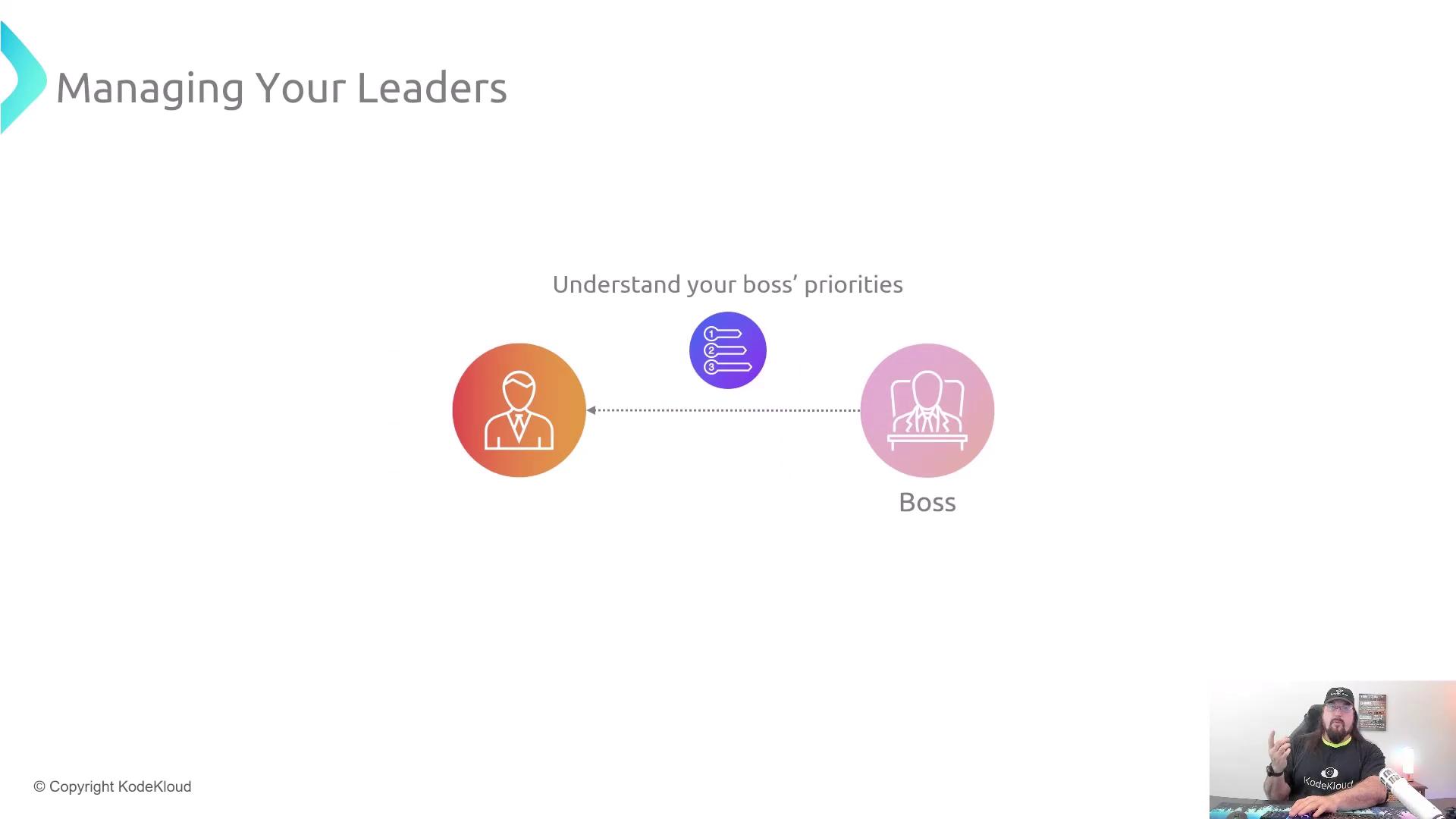
Example status update during an incident:
“We had an issue in production. We’re working to resolve it. ETA two hours.”
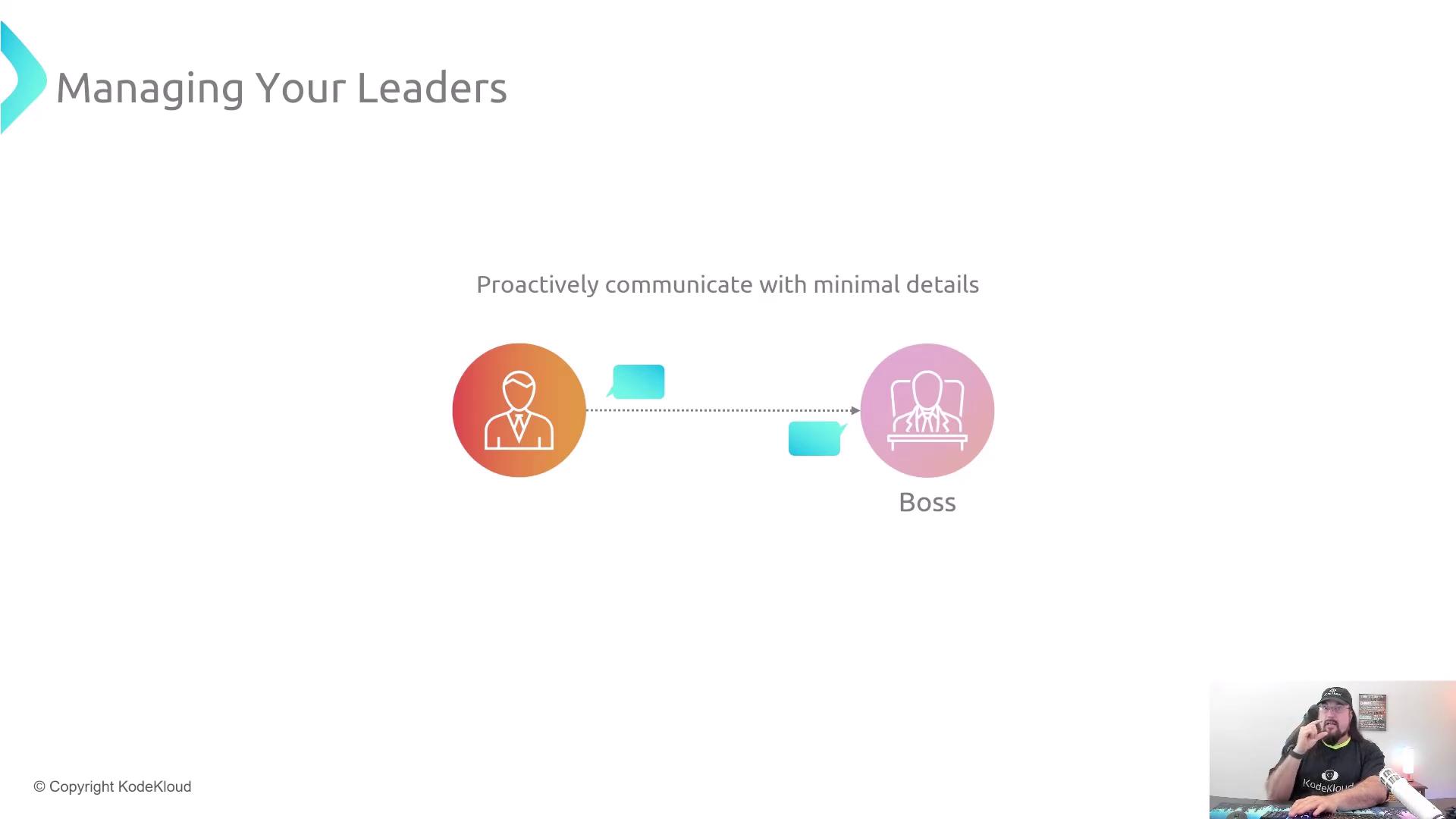
Warning
Avoid overwhelming executives with technical details—they need high-level confidence, not line-by-line logs.
Regular, predictable updates build trust:
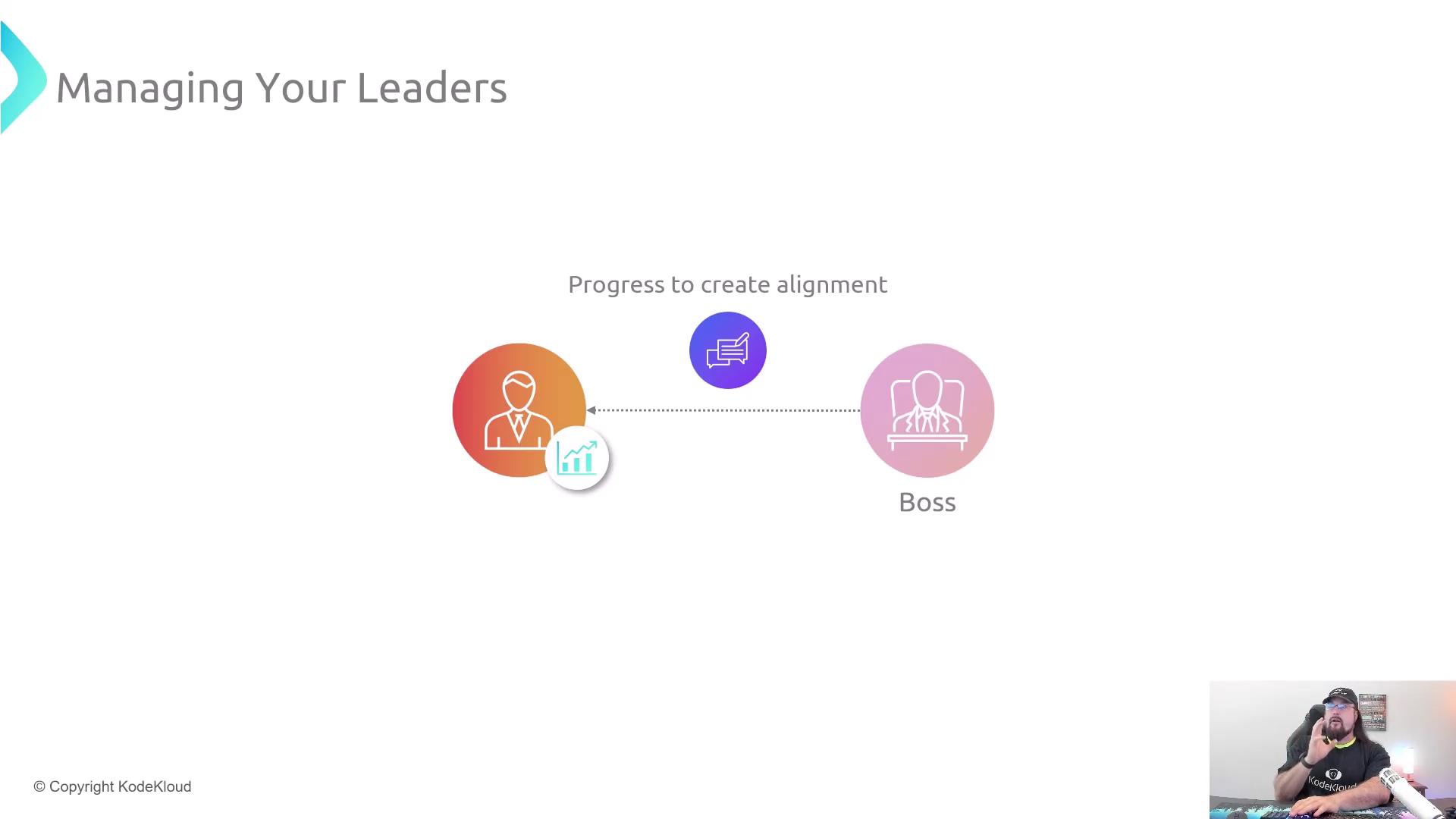
Consistency—whether weekly emails or milestone summaries—lets leaders focus on strategic decisions:
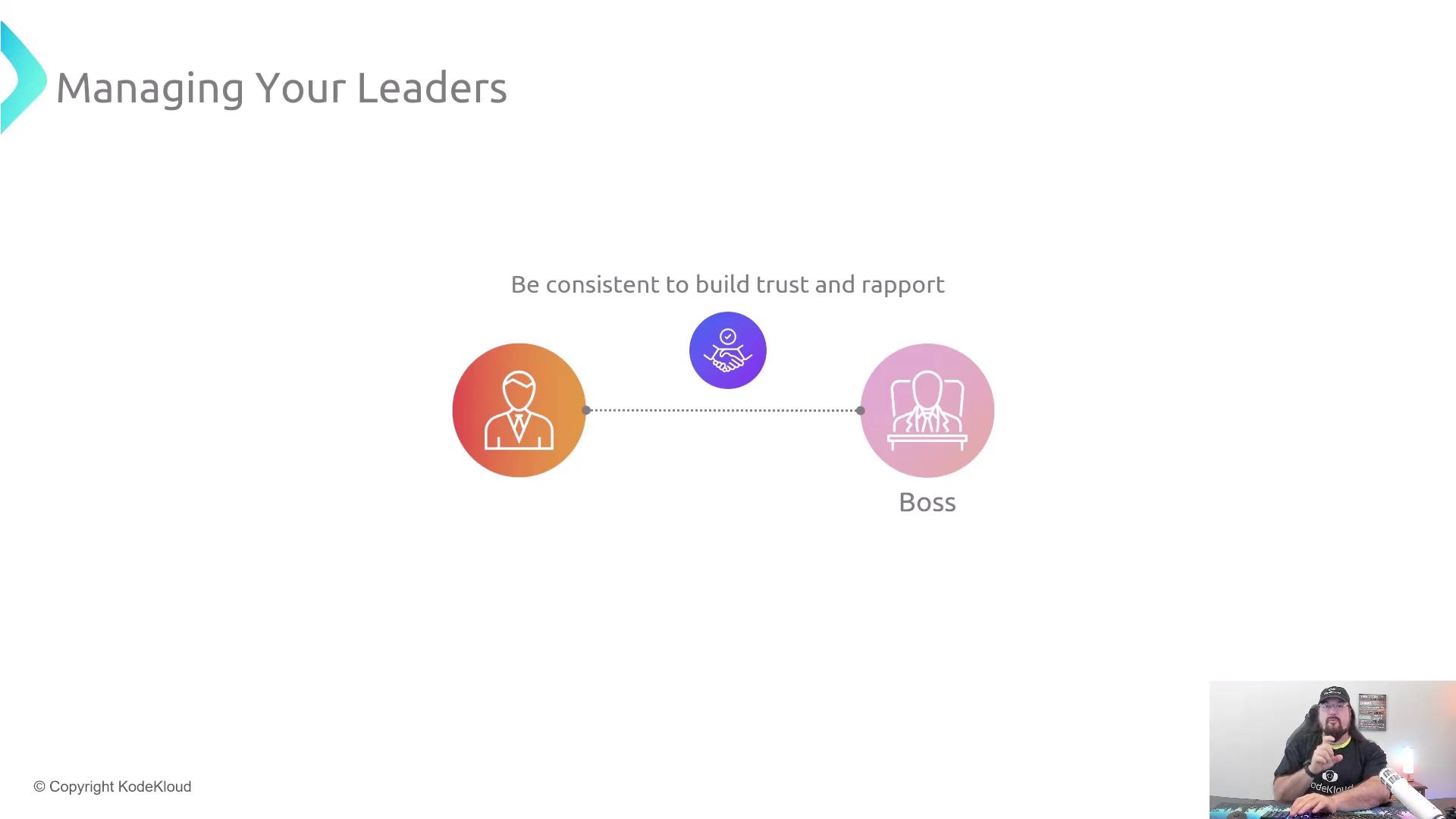
Engaging Your Peers
Developers, QA engineers, data scientists, and project managers rely on shared infrastructure and services. Treat them as internal clients by:
- Clarifying requirements: What environments, tools, or pipelines do they need?
- Aligning on SLAs: Define uptime, performance, and support windows.
- Sharing roadmaps: Keep everyone aware of upcoming changes that might affect work.
![]()
Nurturing Your Employees as Clients
Your direct reports are also clients whose growth and motivation matter:
- Understand ambitions: Some focus on mastering current tasks; others seek leadership or new challenges.
- Offer tailored feedback: Align coaching with individual goals.
- Provide opportunities: Rotate responsibilities, sponsor training, or assign stretch projects.
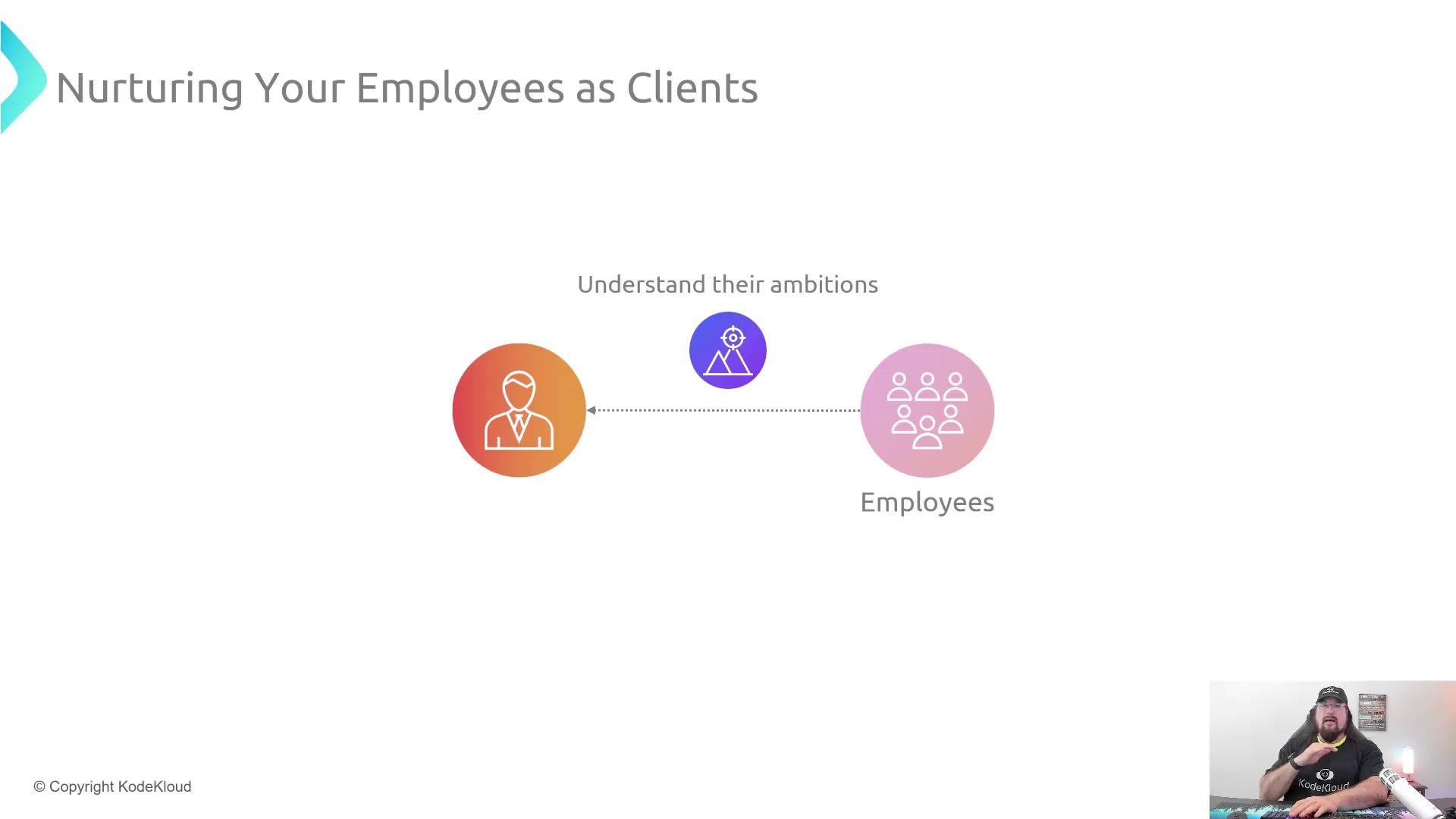
Guard your team’s focus by shielding them from distractions, and address mistakes with constructive correction:
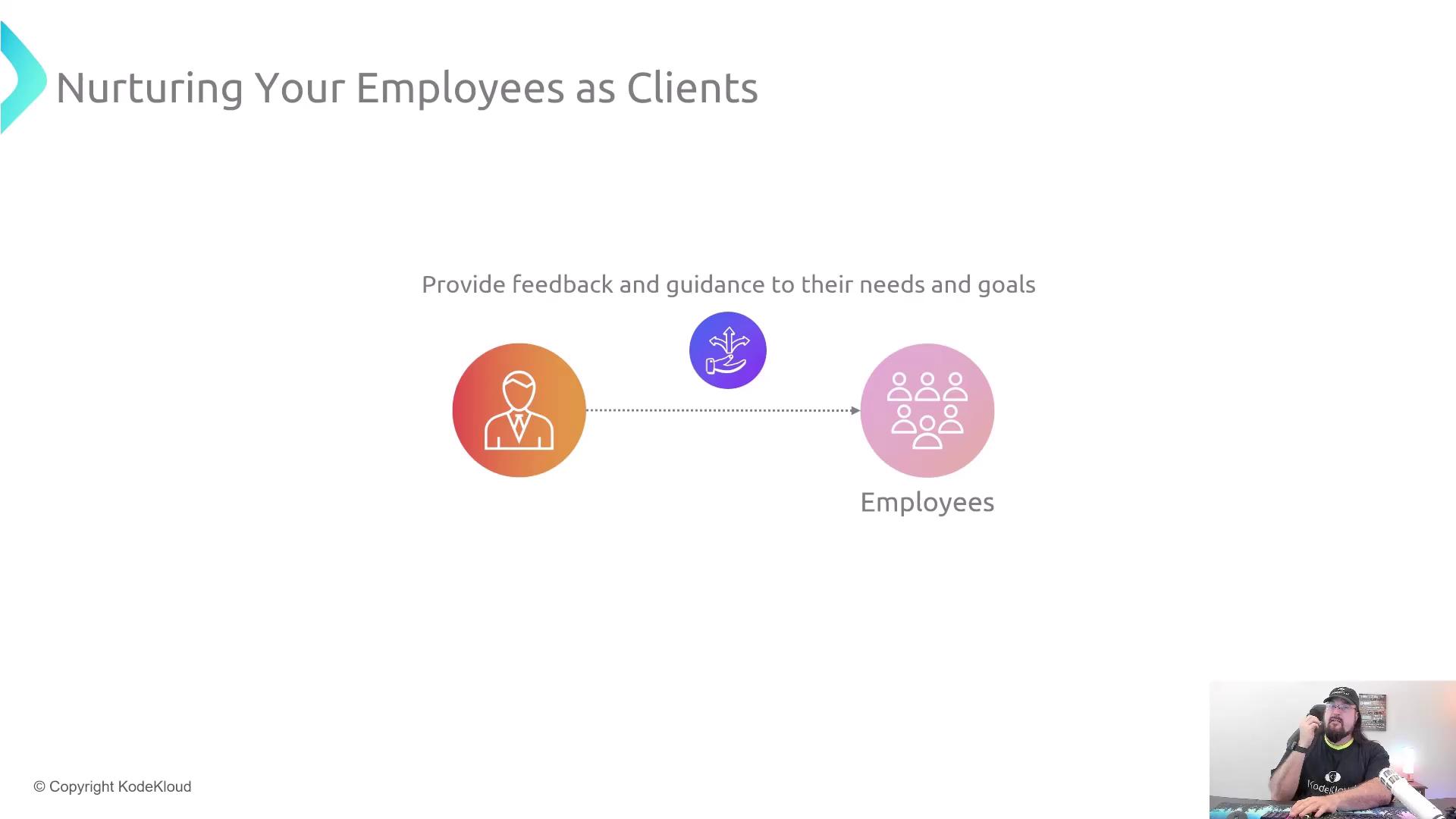
Serving External Clients
External customers expect clear timelines, reliable service, and honesty about constraints. Adopt a “can-do” mindset:
- Acknowledge limitations: “With our current priorities, that scope isn’t feasible. If we adjust X, we can explore it.”
- Define scope, time, cost: Be transparent about trade-offs.
- Maintain quality: When deadlines are fixed, reduce scope rather than compromise on reliability.
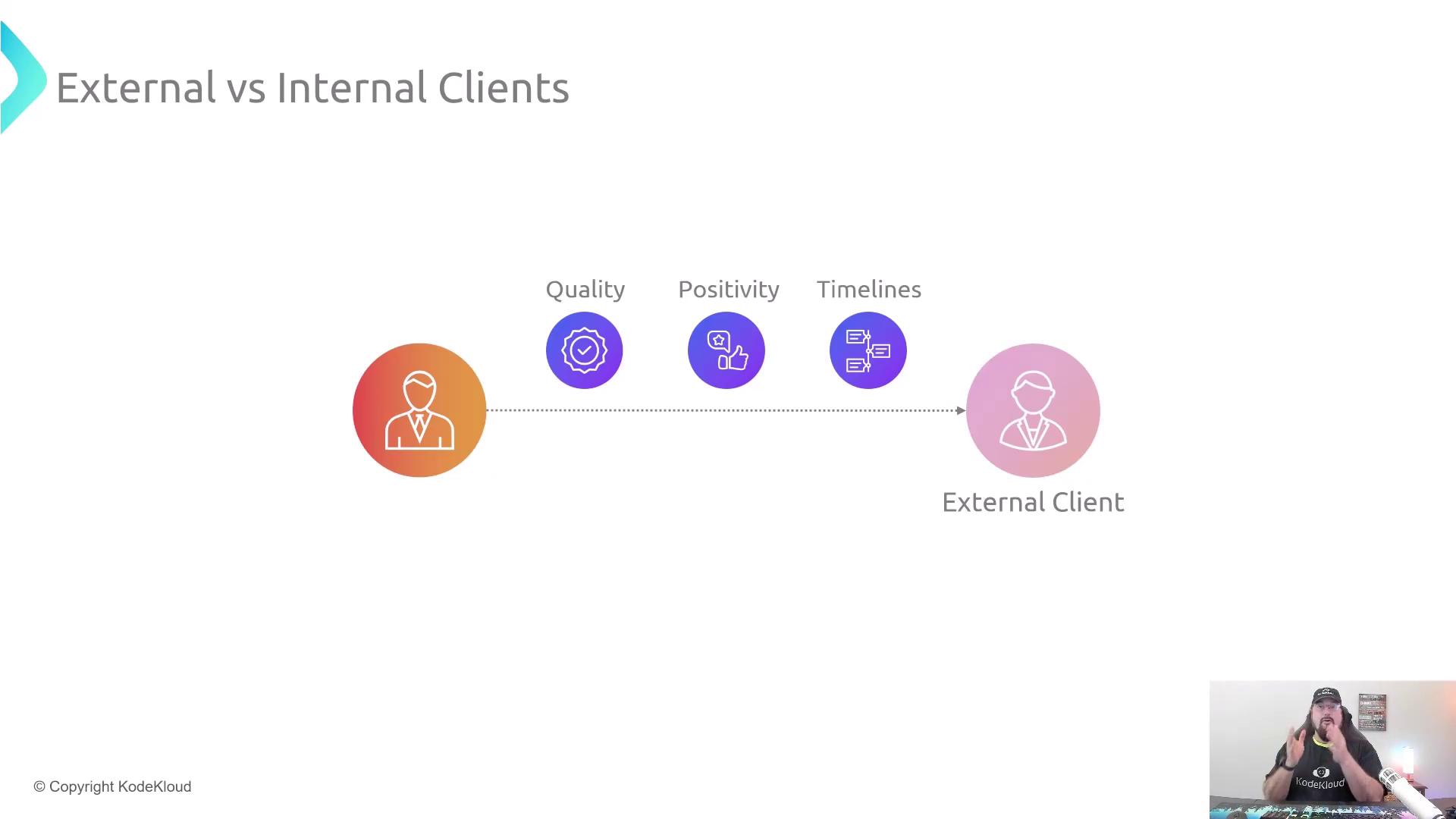
A Client-Centric Approach
Across every client interaction, follow these four principles:
- Always be curious: Ask “why” to understand the request’s impact.
- Listen actively: Paraphrase and confirm to avoid misunderstandings.
- Communicate and document: Use agendas, action items, and summaries for clarity.
- Seek feedback and adapt: Establish loops to ensure ongoing alignment.
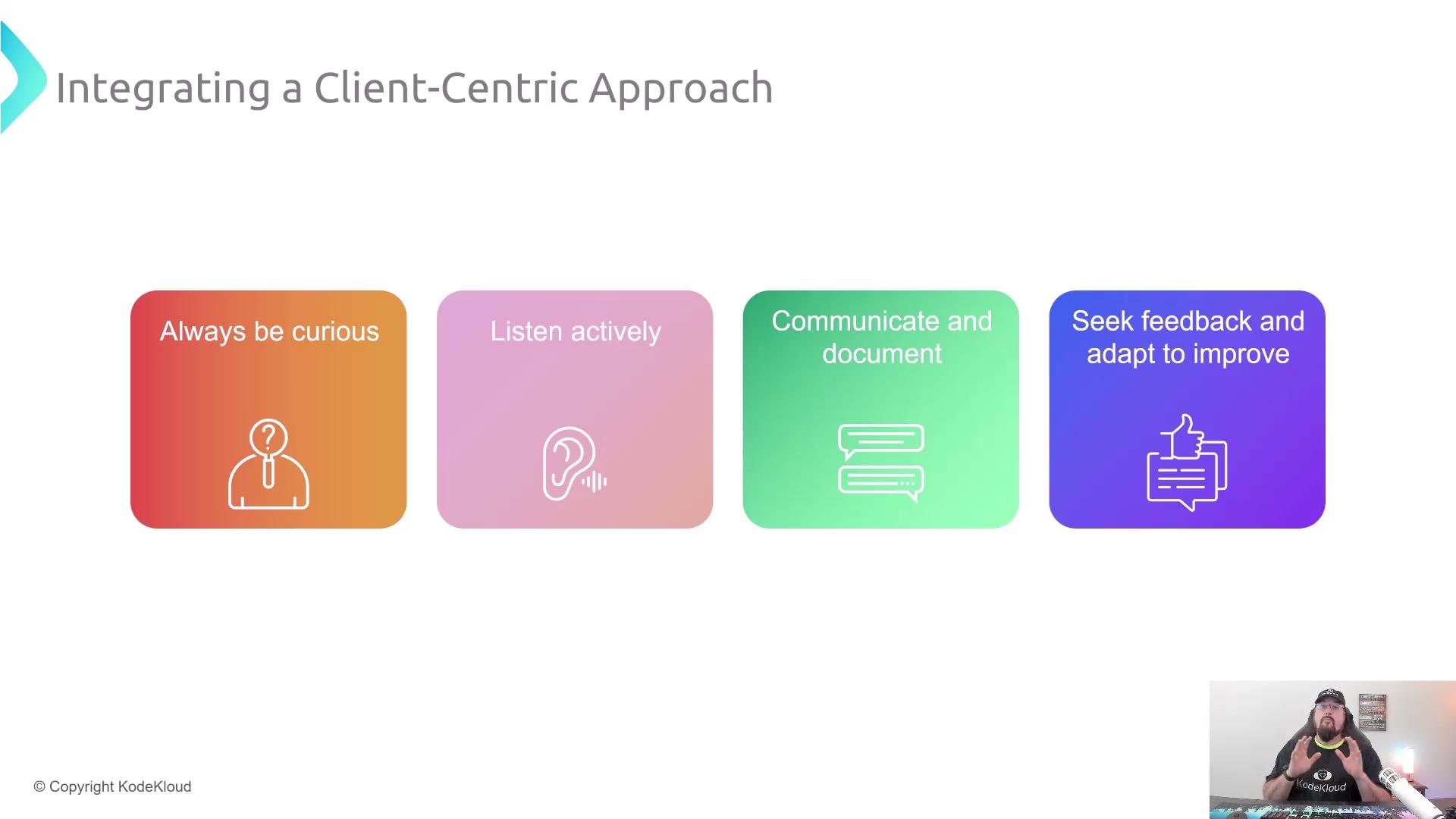
These best practices keep you and all your clients—internal and external—aligned, agile, and trust-building.
Summary
Identifying clients in DevOps means recognizing everyone who relies on your expertise, resources, or decisions. By tailoring your approach for leaders, peers, employees, and external customers, you foster professionalism, trust, and alignment across all interactions.
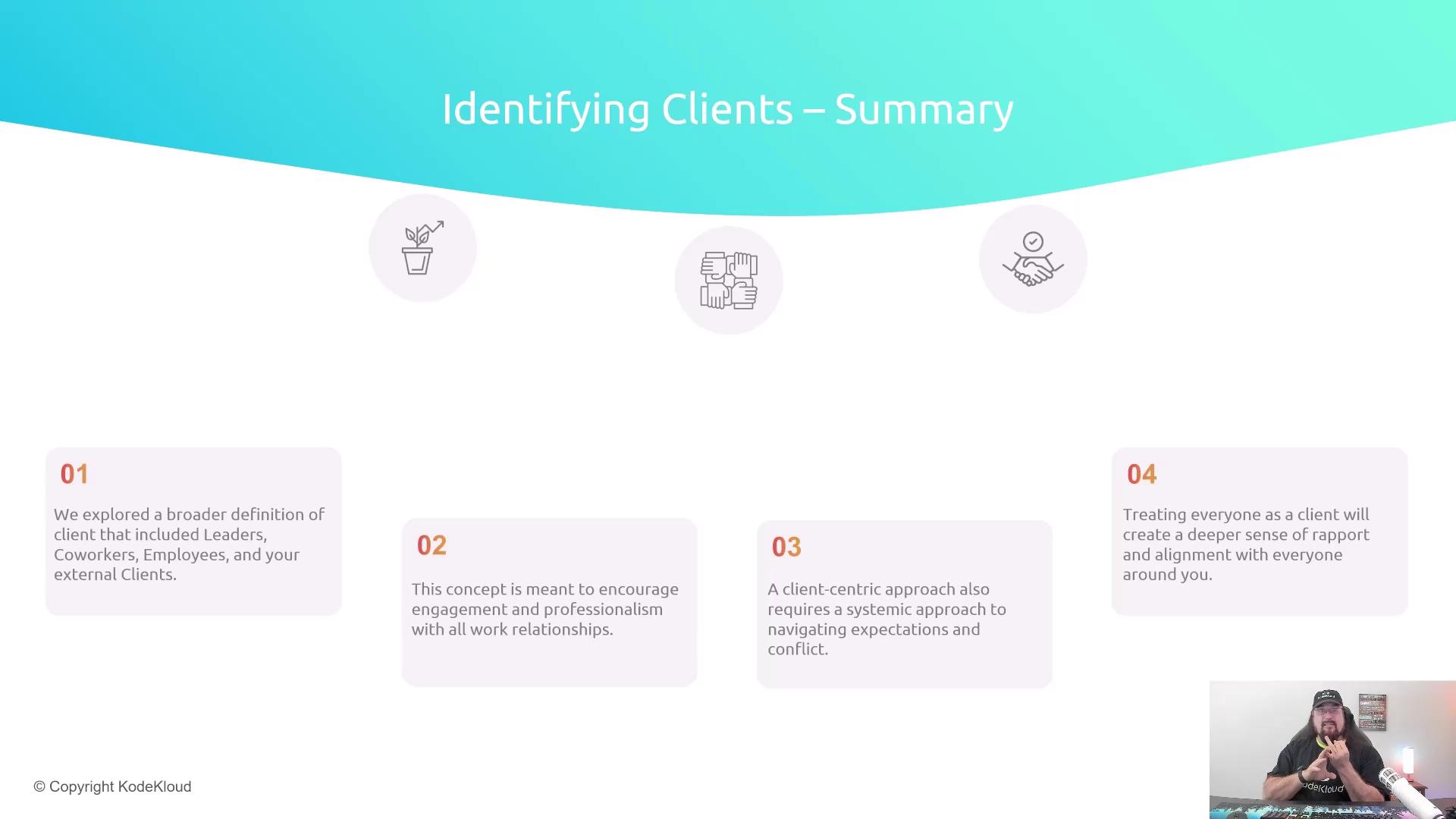
Thanks for reading! See you in the next lesson.
References
Watch Video
Watch video content